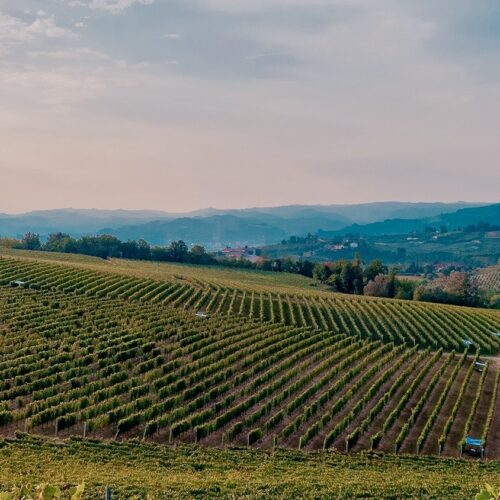If you’re looking for a fascinating drink that combines history, craftsmanship, and a bouquet of flavors, Italian Vermouth is a must-discover gem. And if you want to understand vermouth’s origins and why it’s so closely tied to Italy—and specifically the city of Torino—you need to hear the story that global sommelier and vermouth expert Martina Doglio Cotto shared with me on my podcast, Flavor of Italy.
What exactly is Italian Vermouth?
Martina describes vermouth as a “liquid perfume,” an aromatic, drinkable elixir infused with herbs, spices, and botanicals. It’s technically a fortified wine, with alcohol levels ranging from about 14% to 18%. But vermouth is much more than just a beverage. It’s a sensory experience, deeply rooted in the history and culture of Torino, the elegant northern Italian city where it was born.
Vermouth’s royal beginnings
Italian Vermouth’s story begins in the 1700s when local pharmacists and chemists created herbal infusions for medicinal purposes. But soon, vermouth made its way into the royal court of the House of Savoy, where it became a favorite aperitivo—an elegant pre-dinner drink. Thanks to the royals, vermouth gained popularity across the city’s historic cafés, and its reputation as a “posh drink” was firmly established.

What makes vermouth…vermouth?
There’s one defining ingredient that no vermouth can exist without: artemisia, also known as wormwood. This bitter herb, which grows abundantly in the Alpine areas surrounding Torino, gives vermouth its characteristic complexity. The very name "vermouth" comes from the German word for wormwood—proof of the cross-cultural influences that shaped its creation.
Of course, artemisia alone wouldn’t have made vermouth famous. Torino’s vermouth makers—part herbalists, part artists—began blending it with dozens of other ingredients: alpine herbs, citrus peels, roots, and exotic spices like cinnamon, vanilla, and cloves brought in through the nearby port of Genoa. Each brand developed its own closely guarded recipe, some of which remain top-secret to this day.
Italian Vermouth di Torino: protected and prestigious
Italian vermouth can be made across the country (and indeed, the world), but Vermouth di Torino holds a special protected designation. To bear this prestigious label, the vermouth must follow strict production guidelines set out by the Consorzio Vermouth di Torino. These rules ensure that the product reflects its authentic Turinese origins, from the quality of the wine base (often Moscato, Cortese, or Trebbiano) to the use of locally sourced Alpine herbs.
Learn more about Vermouth di Torino from the official Consorzio website.
The colors and styles of Italian Vermouth
Over the centuries, vermouth evolved into several distinct styles, each with its own personality:

- Rosso (Red): The original version, richly aromatic and caramel-colored, but always made from white wine.
- Bianco (White): Sweeter, lighter, and created with women in mind—designed to be more “elegant” to hold in a glass.
- Rosé: A newer, trendy pink version, prized more for its visual appeal than for any historic significance.
- Extra Dry: A very low-sugar, aromatic style perfect for cocktails.
Aperitivo culture and the birth of the Negroni
Vermouth is at the heart of Italy’s aperitivo culture, particularly in Torino, where the tradition of Merenda Sinoira began. This rustic afternoon snack break for farmers evolved into an urban, social pre-dinner ritual complete with elegant drinks and delicious small bites like tramezzini sandwiches and local cheeses.
Vermouth’s role in Italian mixology is legendary, particularly in the Negroni, one of Italy’s most iconic cocktails. With equal parts vermouth, gin, and Campari, the Negroni highlights the aromatic complexity of Vermouth di Torino, making it a favorite on cocktail menus worldwide.
Discover how to make the perfect Negroni here.

Cooking with Italian vermouth
Martina also revealed that vermouth is not just for sipping—it’s increasingly found in gourmet kitchens. Chefs use it to make:
- Vermouth reductions for meats and seafood
- Vermouth zabaglione, a twist on the classic egg-based dessert
- Tuna tataki with vermouth glaze, combining the herbaceous notes of vermouth with the umami of fresh tuna
- Vermouth Risotto with Scallops and Pistachios, Scented with Lemon and Vanilla

This versatility makes vermouth a powerful ingredient that can enhance both savory and sweet dishes.
Visiting vermouth’s birthplace
For travelers who want to dive deeper, Torino is the ultimate destination to experience vermouth firsthand. Some historic producers, like Cocchi, offer guided tours where you can visit production facilities, see botanical ingredients up close, and even create your own custom vermouth blend.
Explore Cocchi’s visitor experiences.
Martina herself leads a fabulous Vermouth Story Tour, a half-day walking experience through Torino. The tour winds through historic streets where vermouth was first created, ending with a tasting at one of Torino’s iconic cafés—possibly the elegant Caffè San Carlo in the city’s famed Piazza San Carlo.
Italian Vermouth: a global ambassador
While vermouth’s heart and soul remain in Torino, its popularity has spread worldwide. Campari Group, which owns historic brands like Cinzano and Del Professore, exports 85% of its vermouth production to international markets, including the United States, Argentina, and Japan. From artisanal craft vermouths to mass-market brands, there’s an Italian vermouth for every palate.

Why Italian Vermouth deserves a place in your glass
Whether you’re sipping it on the rocks with an orange twist, stirring it into a Negroni, or using it to elevate a recipe, Italian Vermouth offers a perfect blend of history, craftsmanship, and sensory delight. And when you choose Vermouth di Torino, you’re tasting a piece of Piemonte’s rich cultural heritage in every aromatic sip.
If you’re planning your next Italian adventure, add Torino to your itinerary and immerse yourself in the city’s vermouth culture, its elegant café scene, and its unforgettable flavors.
More on Torino (Turin) and the Piedmont Region
An insiders guide to Italy's undiscovered Piedmont region
Gianduia chocolates from Piedmont
Piedmont wines: three outstanding lesser known reds






Please leave your comment here. Your feedback is important!